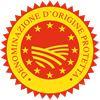Description
The Patata di Bologna PDO refers to the fresh tuber of the Primura variety of seed potato belonging to the species Solanum tuberosum L., with yellow pulp.
Production Area
The production area of Patata di Bologna PDO is within the Province of Bologna, in the Emilia Romagna region.
Production Method
Sowing is carried out in March, after the soil has been prepared, and only certified tubers are permitted, both whole and cut. The preparation of the seed potato includes pre-budding, which allows them to develop earlier and to be more resistant once planted in the field. During this stage, the tubers must be left in a frost-free environment, with soft light. Fertilising is done in such a way to ensure that the soil receives the most suitable nutritional elements, such as nitrogen, phosphorus and potassium, in this way obtaining excellent produce from both a quality and quantity viewpoint. The total production is 60 tonnes per hectare. The product must be harvested when its physiological maturation is complete, that is, when the skin doesn’t tear when rubbed. At this point, it is possible to use special machines which deposit the tubers in containers suitable for transporting them to the collection plants. The harvest generally begins in July. The potatoes are stored in wooden or rigid plastic crates placed in refrigerated cells, at a controlled temperature of between 4 and 7 °C and away from light. This is to limit moisture loss while they are waiting to be packaged.
Appearance and Flavour
Patata di Bologna PDO is a regular, long oval shape, with small superficial buds (eyes). The peel is smooth, intact and free from external defects that could modify its characteristics. The size of the tubers is uniform (between 40 and 75 mm) and the pulp is consistent, with a colour ranging from white to straw-yellow. The product has a long shelf-life and a typical flavour.
History
Historical sources to date recount that the diffusion of the potato in the Bologna area took place at the beginning of the 19th century, thanks to agronomist Pietro Maria Bignami, who supported the cultivation of this vegetable and encouraged local farmers to learn about it. This cultivation reached its maximum potential during the 20th century, becoming an important resource for the local rural economy of the entire Province, right across the valleys, hills and mountains.
Gastronomy
Patata di Bologna PDO should be kept in a cool, dry place. It can only be eaten after cooking and is excellent both on its own and with other foods, as it can sweeten their flavour. This is why it is often served with fish like dried salted cod or cuttlefish. It can be used in dishes with a more distinctive flavour, such as roulade stubanki with pear carpaccio, or more traditional dishes like cannellini bean puréed soup with balanzoni pasta stuffed with Mortadella Bologna PGI and Patata di Bologna PDO.
Marketing
The product is marketed as Patata di Bologna PDO. It is sold in sacks weighing 4, 5, 10 and 25 kg, with a central or printed band measuring at least 10 cm; in net bags weighing 0.5, 1, 1.5, 2 and 2.5 kg, in vertbags, quickbags, girsac bags and bags weighing 0.5, 1, 1.5, 2, 2.5 and 5 kg; in trays weighing 0.5, 0.75 and 1 kg; or in cartons and crates weighing 10, 12.5, 15, 20 and 25 kg. It is available from July to May in the year following the harvest.
Distinctive Features
The specific organoleptic qualities of Patata di Bologna PDO are given to the composition of the soil, which is rich in potassium, phosphorus and nitrogen, and to the area’s rainy climate that facilitates the vegetable’s first growing stages and the start of suberisation.

































